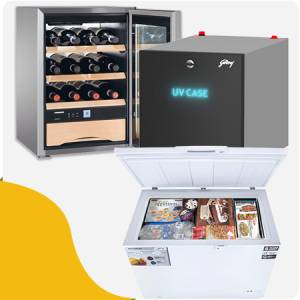Description
Refrigeration: Keeping Your Goods Cool and Fresh
This comprehensive guide explores the world of refrigeration, from the fundamental principles to the latest technological advancements. Whether you're a homeowner, a business owner, or simply curious about how refrigeration works, this description provides a detailed overview of its various aspects.
Understanding the Core Principles
Refrigeration is the process of removing heat from a defined space to maintain a lower temperature than the surrounding environment. This is achieved through a thermodynamic cycle that utilizes refrigerants – substances that absorb heat at low temperatures and release it at higher temperatures. Common refrigeration cycles include:
- Vapor-Compression Cycle: The most widely used method, involving evaporation, compression, condensation, and expansion of the refrigerant. This cycle is efficient and is employed in most household and commercial refrigerators and freezers.
- Absorption Refrigeration: This cycle uses heat as the energy source, making it suitable for applications where electricity is unavailable or expensive. It's often found in gas-powered refrigerators.
- Thermoelectric Cooling: A solid-state method that utilizes the Peltier effect to transfer heat. This technology is typically used in smaller, specialized applications due to its lower efficiency compared to other methods.
Types of Refrigeration Systems
The application and scale of refrigeration determine the type of system employed. These include:
- Household Refrigerators: Commonly use the vapor-compression cycle and are designed for domestic use, ranging from small dorm-sized units to larger, family-sized models offering various features like ice makers and water dispensers.
- Commercial Refrigerators: These are larger-scale systems designed for supermarkets, restaurants, and other businesses. They can be walk-in units, reach-in refrigerators, display cases, and more, tailored to specific needs and food storage requirements.
- Industrial Refrigeration: Used in large-scale applications such as food processing plants, cold storage warehouses, and ice rinks. These systems require significant capacity and often incorporate complex control systems.
- Automotive Refrigeration: Essential for transporting perishable goods in vehicles, utilizing specialized compressors and insulated containers to maintain temperature control during transit.
Key Components and Considerations
Understanding the core components is vital for effective refrigeration:
- Compressor: The heart of the system, responsible for circulating the refrigerant.
- Condenser: Dissipates heat from the refrigerant, usually through air or water cooling.
- Evaporator: Absorbs heat from the refrigerated space.
- Expansion Valve (or Capillary Tube): Controls the flow of refrigerant.
- Refrigerant: The substance that facilitates heat transfer. Modern refrigerants are selected for their environmental impact and efficiency. Common examples include R-134a and R-410A.
Energy Efficiency: Energy consumption is a significant factor. Consider Energy Star ratings and features like efficient compressors, insulation, and advanced control systems to minimize energy waste and operational costs.
Maintenance: Regular maintenance, including cleaning, filter changes, and professional servicing, is crucial for optimal performance, extended lifespan, and preventing costly repairs.
Conclusion
Refrigeration technology is constantly evolving, with a focus on energy efficiency, environmental responsibility, and improved performance. This guide offers a foundational understanding of this essential technology, encompassing its principles, various types, key components, and considerations for selection and maintenance. Understanding these aspects allows you to make informed decisions based on your specific needs and contribute to sustainable practices.
